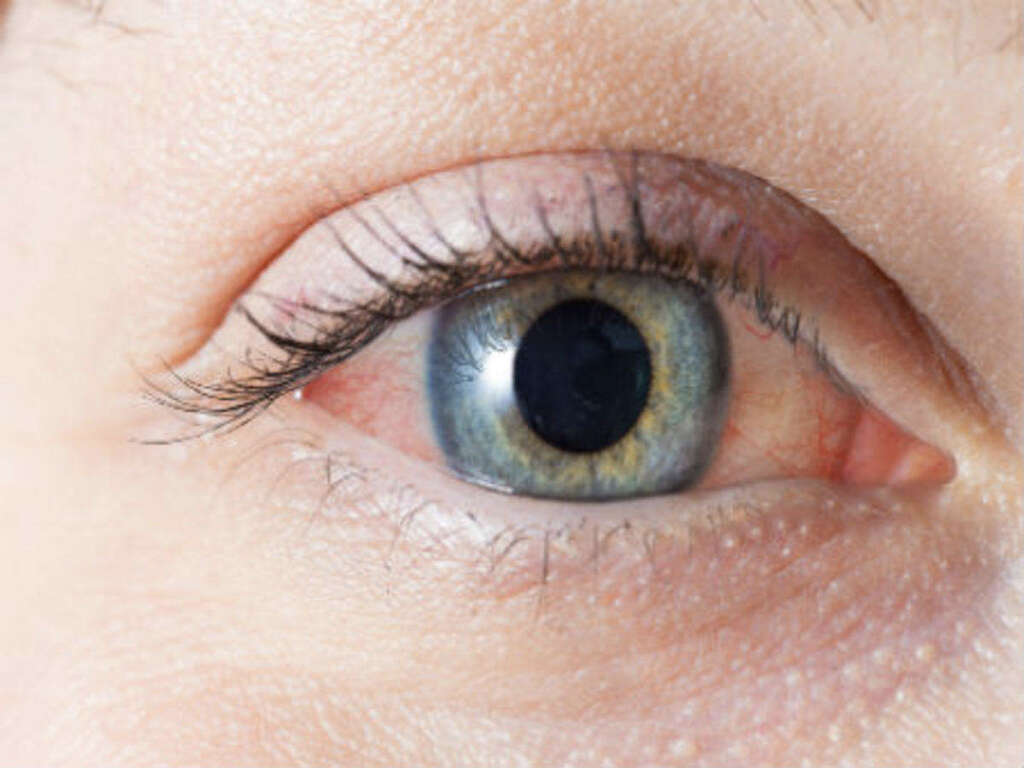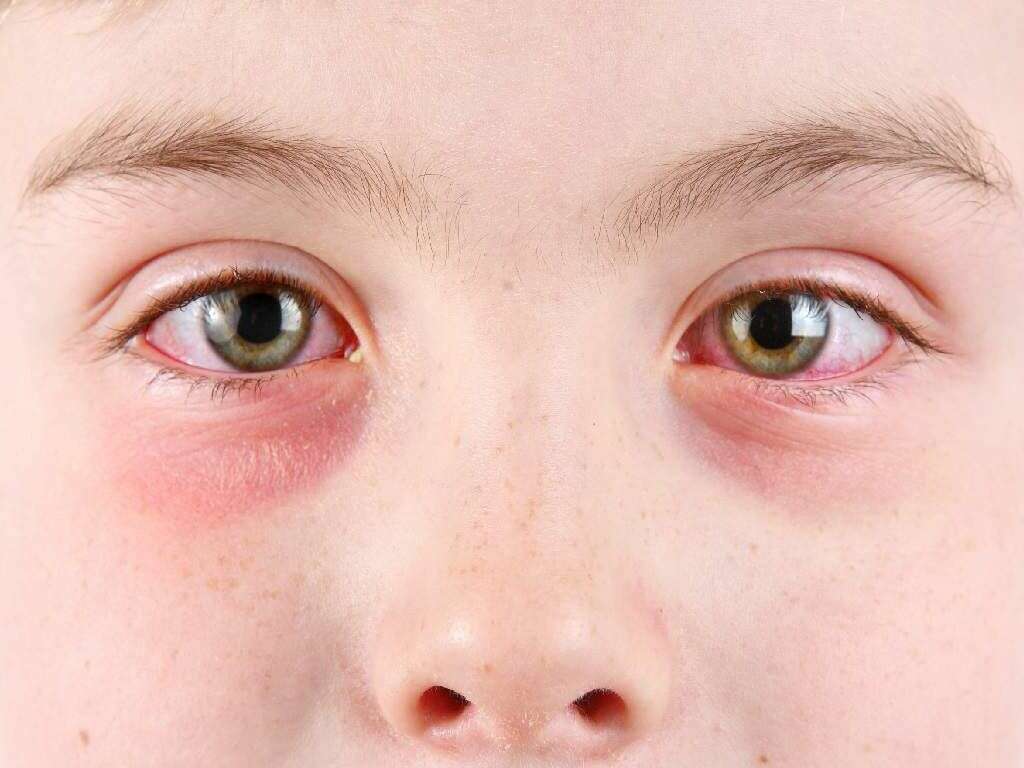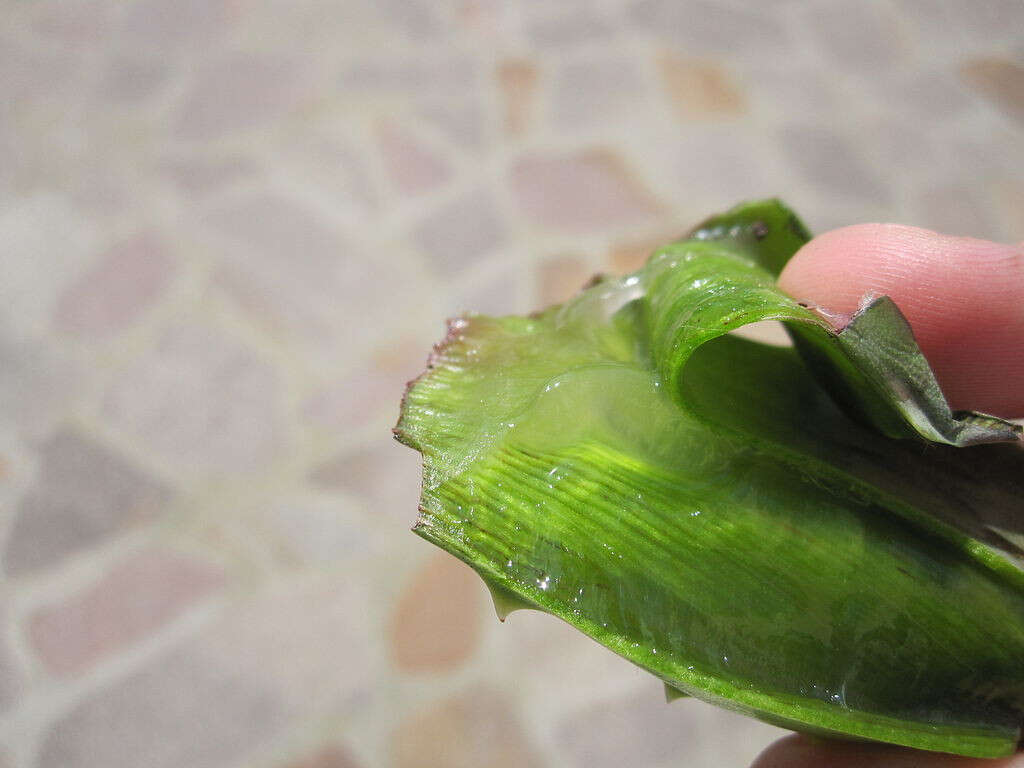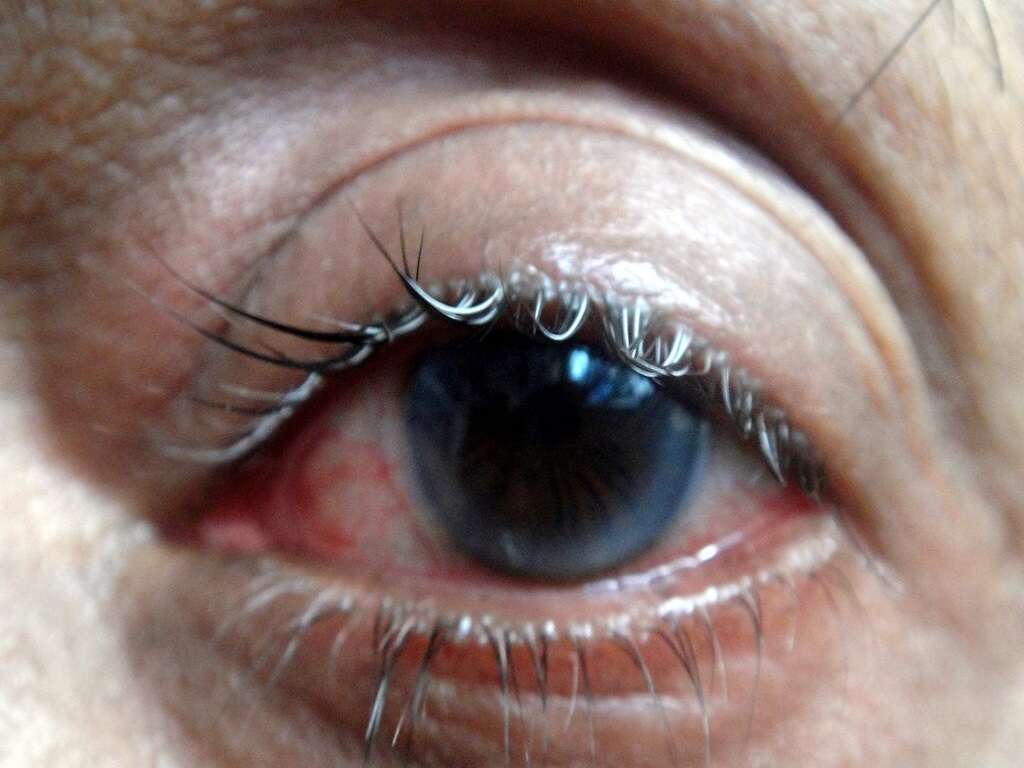10 Pink Eye Symptoms
Conjunctivitis, commonly known as pink eye, is an inflammation of the surface of the eye and inner eyelid. It is responsible for 30% of eye-related emergency room visits, and outbreaks frequently visit children attending schools and daycare centers.
A variety of pathogens cause pink eye, and treatment is based on the diagnosis. Viruses are the most common culprits, especially in cases that occur during summer. Bacteria, fungi, parasites, toxins, and allergens also are responsible. Regardless of the cause, the following are 10 symptoms of pink eye.

1. Redness
The common name of conjunctivitis, pink eye, is an apt description of its most obvious symptom. The coloration may take the form of an overall pinkish to red hue, or resemble squiggly red lines covering the white part of the eye.
The red color is caused by blood inside the capillaries of the eye. When the cells of the eye sense a pathogen, they call for help with chemical messages. These chemicals cause blood vessels in the area to swell, allowing for more white blood cells to enter the area.
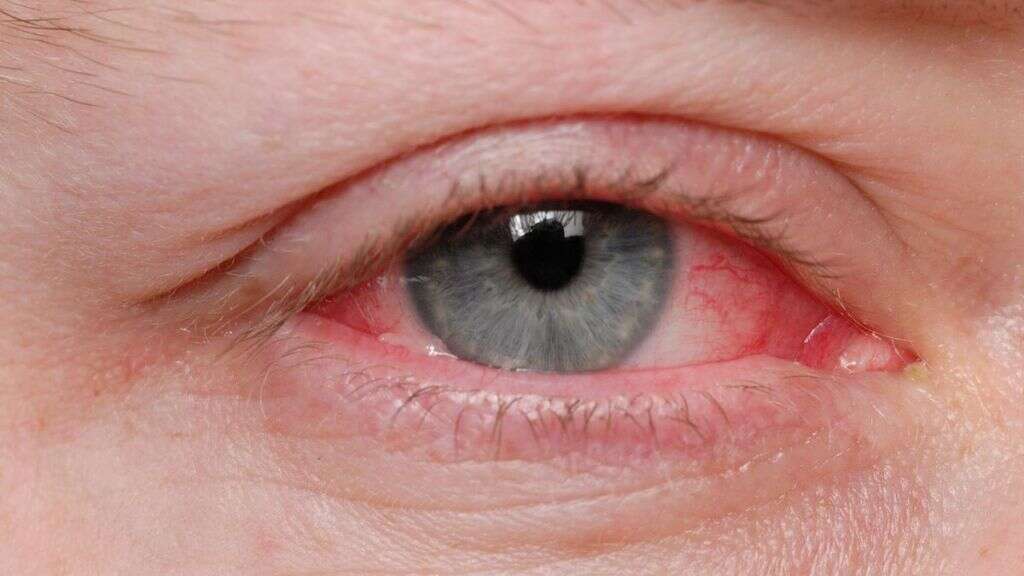
2. Discharge
An eye with conjunctivitis waters much more than usual. The consistency of the fluid varies from thin and clear in the case of viruses and allergies, to goopy and yellow in bacterial infections. People feel the need to wipe their eyes frequently and remove dried fluids from the corners of the eyes.
Lacrimal glands just above the outer corner of each eye continually produce a lubricating liquid. Normally, tears roll across the surface, drain through tiny pores in the eyelids, and flow into lacrimal sacs inside the nose. When fighting an infection, the glands increase production and the excess runs onto the face.

3. Glued Eyelids
A somewhat startling symptom is to wake up in the morning unable to open the eyes because they have been sealed by dried pus. Young children especially can panic when this occurs and need reassurance that nothing is seriously wrong. The remedy is to apply a warm, wet washcloth to the eye area until the crust softens.
Pus is a thick, yellowish liquid the body makes as it fights infection. Pus consists primarily of dead leukocytes, which are a type of immune cell that engulf and digest invading organisms. Other components include water, debris from damaged tissues, and living or dead pathogens.

4. Gritty Feeling
People with pink eye often complain of feeling as if their eyes are full of sand, or that there is something in their eye that they can’t seem to remove. Children may not be able to articulate this sensation but may be seen rubbing their eyes frequently.
The cornea contains a dense concentration of nerves that protect the eye from damage through their responses to light, touch, and temperature. When an infection is ongoing, however, these nerve endings can fire haphazardly, resulting in sensations the brain interprets as being caused by a foreign object like sand or grit.

5. Itching and Burning
The pain of pink eye is not severe. More prominent is a feeling of itching or burning that comes and goes throughout the day. Most people have an urge to rub their eyes in response, often without realizing they are doing so. Touching surfaces after rubbing the eyes is the primary way people spread the infection to others.
Although scientists do not completely understand the complex relationship between itching and scratching, many regard scratching as a reflex behavior with the purpose of keeping toxins and parasites off the body. Scratching temporarily interferes with the neuron’s firing, providing relief.

6. Eye Swelling
The outer surface of the eye sometimes swells with fluid to the point that an individual cannot close the eyelids. This symptom occurs most commonly when the source of pink eye is an allergy. It sometimes results from viral or bacterial infections, but rarely with chlamydia.
Chemosis is the word used for a swelling of the conjunctiva, or outer membranes, of the eye. It is caused by an excess of fluid inside tissues. This fluid accumulates as part of the body’s immune response and is one way it tries to rid itself of pathogens.
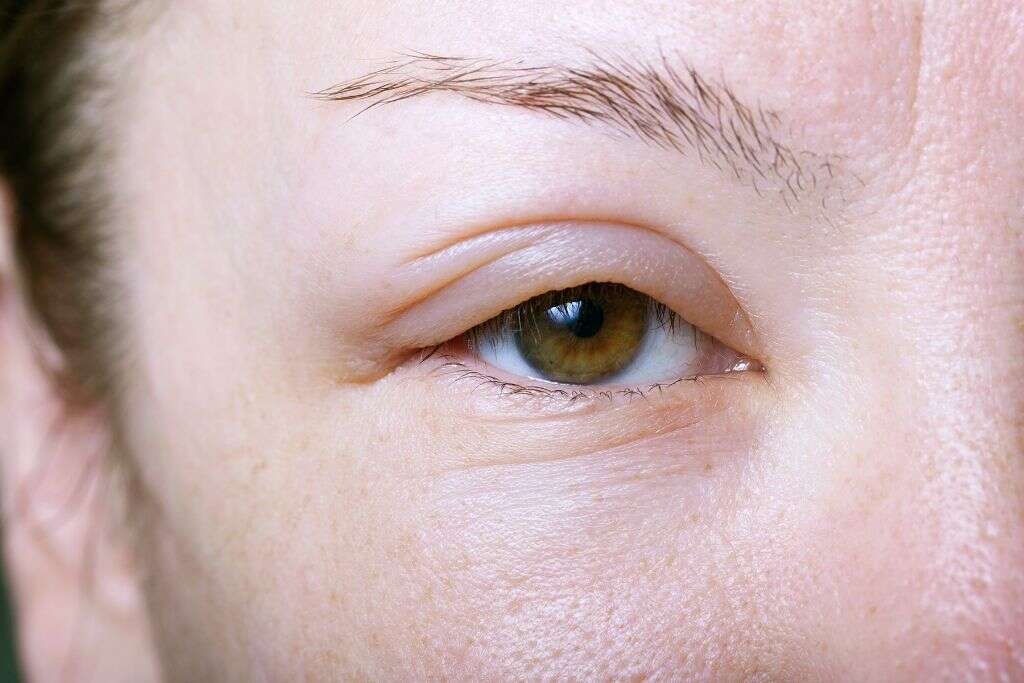
7. Light Sensitivity
While not everyone reports this symptom, some people experience sensitivity to light. It can manifest as an irritation that makes it difficult to keep the eyes open in sunlight, or as a feeling of actual pain. While the pain is not as intense as photophobia experienced during migraine headaches, it can be uncomfortable.
When light hits the rod and cone cells on the back of the eye, the brain normally perceives light and color. Because these cells are located near brain regions that process pain through the optic nerve, an infection can cause them to function abnormally, causing the brain to interpret the sensation as pain.

8. One or Both Eyes
When caused by allergies, viruses, or bacteria, pink eye usually presents itself in both eyes simultaneously. Sometimes the infection begins in one eye but quickly spreads to the other. Physical damage to the eye, chemicals, and disease of the tear ducts often result in unilateral infections.
It is theoretically possible for conjunctivitis to remain localized in one eye for the duration of the illness, even when caused by a virus or bacterium. However, it usually spreads to both eyes as the pathogens make their way across the nose from one eye to the other. It spreads easily in the same way from person to person, especially among children.
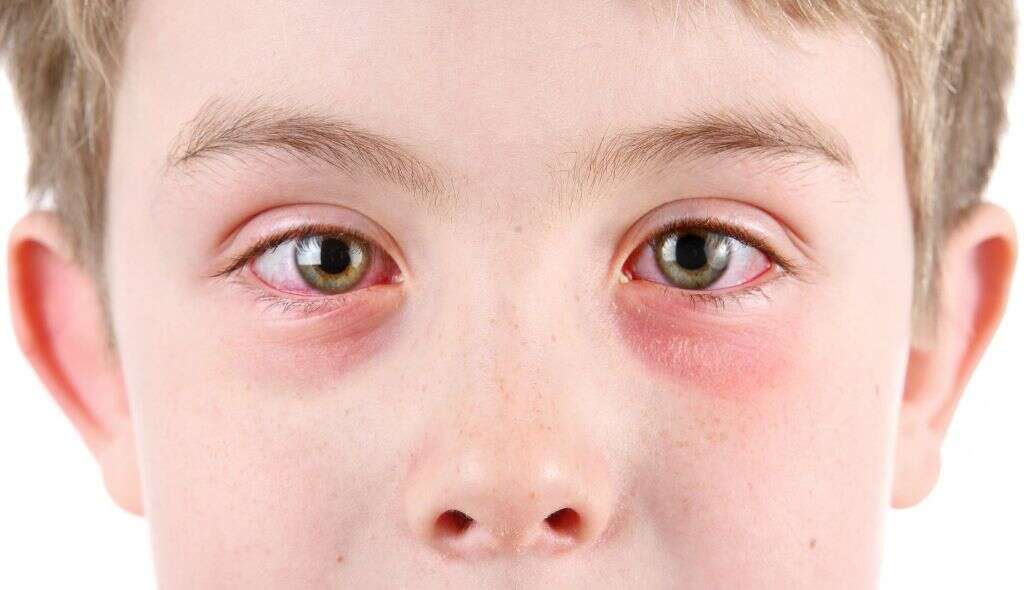
9. Acute or Chronic
Over the years, most parents have received at least one call from a school nurse to inform them that their child is being sent home from school for having pink eye. This is because the condition can have a very sudden onset, and a child’s red eyes are easy to overlook in the rush of a family’s morning routine.
Symptoms of bacterial pink eye present themselves suddenly, or over the course of one or two days. Mechanical or chemical damage also has an acute onset. Viral and allergic infections can happen suddenly, but also can have a chronic component that comes and goes or stays indefinitely. Chlamydial infections are usually chronic.

10. Swollen Face
Pink eye can give the entire face a swollen appearance. In particular, the region in front of the ears and along the cheekbones are puffy are sore. This is because the body’s attempt to rid the eyes of infection includes sending lymphatic fluid to the facial area.
Lymph nodes are small, bean-shaped organs containing lymphatic tissue and immune cells. They are located all over the body, positioned to fight nearby infections. When experiencing pink eye, the preauricular lymph nodes near the temples become activated and swell.




